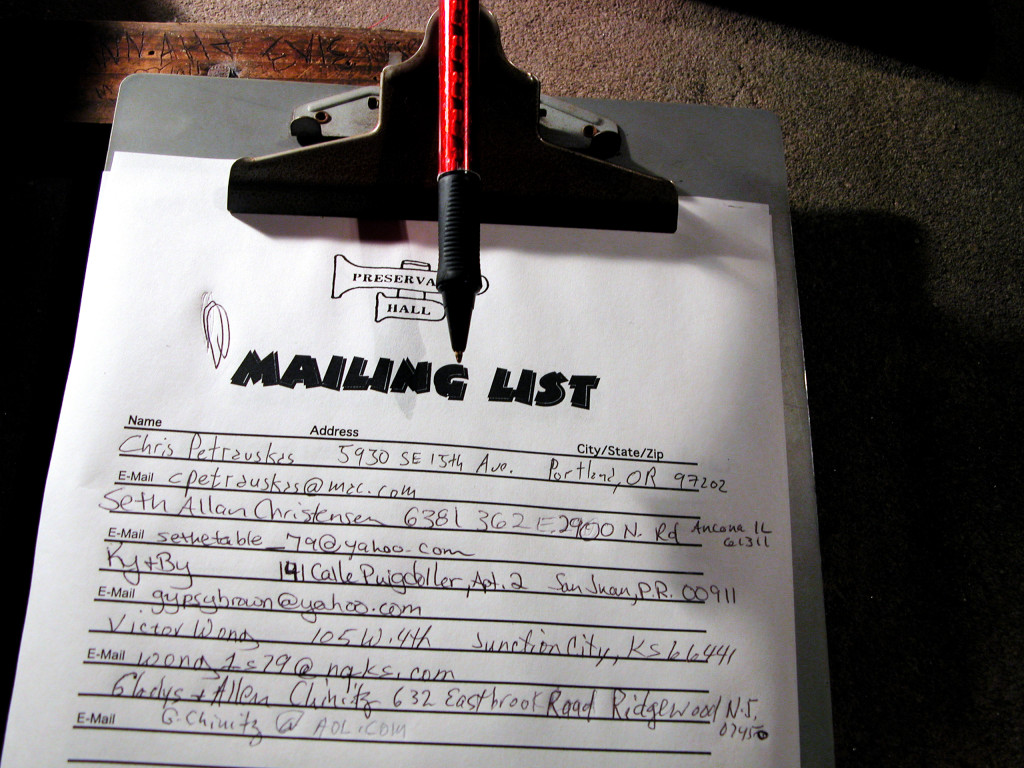5 Common Mistakes People Make With E-Mails
We’ve been covering a lot of the fundamentals of email marketing, as well as what makes a great e-mail from the subject title to the overall message. Now that we’ve covered those elements, let’s go over what could make or break an email with the top 5 common mistakes:
1) Under appreciating the importance of the subject title
This is a great opportunity to experiment. If you don’t have a good open rate, try tweaking it. Many people undervalue the subject title but it really is the very first thing a person sees when they open their inbox. Without something compelling them to open yours among the several others, your message may very well just dissipate in the sea of the unopens.
Again, I say, if you don’t have good opens, tweak-tweak-tweak! You never know what is going to get people to open your e-mails. Recently, I tried doing this and to my surprise, the highest open rates I’ve had all month was from an e-mail with the simple subject title, “Hey”.
Now, that’s not going to work for everyone. It all depends on who your audience is. Keep that in mind because it is vital for you to know who you’re sending your e-mails to.
2) Talking to “Them” versus talking to “You”
When you receive an e-mail, who are you going to pay more attention to: A person who’s addressing a group of people or a person who’s speaking directly to YOU? Common practice in e-mail marketing is you write for the individual, not the collective.
This means if you have a sizable list, you’re not going to write your e-mails with something like, “Hey guys!” You’re going to write your e-mail as if you are only sending it to ONE individual.
Again, this is why it’s important to know who your target audience is. Create the idea customer… a single entity. Come up with a list of all their characteristics and speak to that person ONLY.
What will happen is, you will attract people to your list who can relate with one another because they all share similar traits as the niche character you created, so even though you are writing to “one”, your entire list will feel like you’re talking specifically to “them”!
Oh and it goes without saying that if you’re addressing the “one” you don’t get into specifics assuming things that may not be true. For instance, you don’t want to say “Hey my fellow Puerto Rican brother!” because…no. You also don’t want to say, “What’s up my Christian brethren” because you may have atheists or people from other religions on your list.
Don’t get to those kinds of specifics… just what the core interests of your ideal customer might be. But of course, this goes without saying… (I just had to say it).
3) Pitch, Pitch, Pitch… Wanna buy???
The best way to sell a product is by not selling the product… Let your mind wrap around that one.
If I’m interested in a new Playstation 4, I don’t need some guy from Best Buy to come up and try to sell it to me… I’m already interested. I plan on buying it.
However, I may need a little encouragement to make my purchase, why? Because as much as I want the Playstation 4, while I’m looking at it and holding the box in my hands I’m having an internal dialogue weighing the positives and negatives of making that purchase.
PROS: It’s fun, I really want it, I can play blu rays from it, I can access the internet and stream Netflix, it’s fun fun fun!
CONS: I’ll have to part with $300, is this a good use of my money? Should I spend my money on more practical things?
You know you’ve had that dialogue.
So what happens? The Best Buy guy comes up and asks, “Finding what you’re looking for?”
You smile. You look at them and say, “Yes. I’m just looking.”
They reply, “Okay well let me know if you have any questions.”
As he walks away, you look back at your Playstation 4. What happened? Your internal dialogue has been broken by his interruption! You’re trying to trace back your thoughts but now you’re thinking if you don’t make a decision soon, that guy is going to come back again and break your focus.
You think faster… logic and reasoning goes out the window and… BOOM. You’ve just spent $300 on a new Playstation 4.
Oh, and $50 for a new game.
And $50 for an extra controller.
…and another $50 for that camera thing that it’s supposed to come with but is conveniently sold separately.
Do you see what I did there? I gave you a basic flow chart (without actually drawing a chart) going over the process of making a purchase. The Best Buy employee in my example plays an important role in my story… but not once does he try to actually sell it to me, yet I walk out the store with my purchase anyway.
What I’m getting at is this: the secret to successful selling is to not sell… at least, not sell out right. You want to sell your product but you don’t want to come off desperate or forceful. You may wind up making some sales that way but trust me when I say it’s short lived and not worth the extreme amount of effort that goes into making only short term sales.
Don’t pitch. Don’t chase money, let the money chase you.
LINK: How to write a compelling e-mail to you subscribers for your business.
4) Changing your product over and over!
If you’re promoting a business or product, stick with it for a while! I’ve seen too many people jump ship several times trying to find that success they’re craving and only wind up alienating their customers because they keep changing their product and spend all their time trying to convince people of how good it is… until they join something else the following week!
Listen, if it didn’t work for SEGA, it’s not going to work for you!
Stick to something!
All you really need is a product and then build a team / customer base from it. By being consistent you have the best chance of building sales and earning money.
5) Click here to go to… Nothing.
Another common mistake is people at times will send out an e-mail and not check their work. Their e-mails may be writhe with grammatical errors (a few here and there is okay and makes you seem more human, but don’t let people think you didn’t graduate elementary school) or worse… bad links!
You don’t want to spend all that effort writing an e-mail and generously place links to your products only to get the link wrong and send them into a 404 page!
Or worse… promote an affiliate link and use someone else’s link by mistake! I mean, yeah it’s great for them but good luck trying to get your money after explaining you pasted their link on accident!
Whenever I write an e-mail, I test it out. I click all the links and proof read my content a couple times. If it’s a really important e-mail, I send a copy to my inbox and go through the user experience myself to make sure my e-mail is conveying everything I want correctly.
Did You Find This Article Helpful?
We’re definitely not done! I have more helpful training on e-mail marketing coming up and I have some advanced training that I’m sharing with my subscribers! To get in on the goods, you gotta drop your info below:



May 16, 2015 @ 12:06 pm
Great blog, Jason! A wonderful guide to go by. Thank you!
May 16, 2015 @ 12:35 pm
Thank you, Sheri! Hope you take some value from it 🙂
May 17, 2015 @ 4:32 pm
Good article well thought out, some good points there worth bearing in mind! 🙂 Thanks!
May 17, 2015 @ 8:23 pm
Thanks Jez! Feel free to apply as much of this info into your e-mail marketing tactics!
May 16, 2015 @ 12:18 pm
Awesome blog post and loads of good info that I never knew – will definitely be using some of them – thanks
May 16, 2015 @ 12:37 pm
Great to hear, Karen! Right on
May 16, 2015 @ 1:25 pm
Value packed post! I appreciate you sharing your knowledge with us! 🙂
May 16, 2015 @ 2:28 pm
Thanks Vinny 🙂 I appreciate your appreciation!